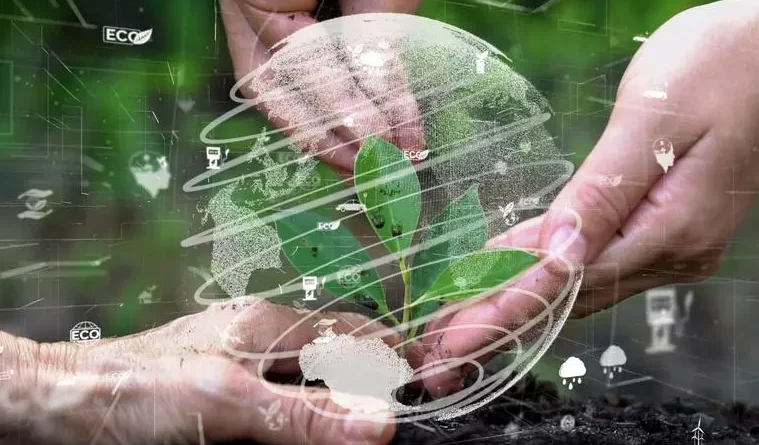How Can Technology Help Solve Global Sustainability Issues?
As the world faces unprecedented challenges related to environmental degradation, resource depletion, and climate change, the role of technology in addressing these issues has never been more crucial. Technology, in its various forms, offers innovative solutions that can drive sustainable practices, reduce human impact on the planet, and create a future where economic growth is aligned with environmental stewardship. From clean energy and smart agriculture to waste management and water conservation, technology has the potential to revolutionize the way we approach sustainability.
In this article, we’ll explore how technology is helping solve global sustainability issues and how various technological advancements can contribute to a more sustainable and equitable future for all.
1. Technological Innovations in Clean Energy
One of the most critical sustainability issues that the world is grappling with is the transition from fossil fuels to cleaner, renewable energy sources. Fossil fuels are major contributors to carbon emissions and global warming, and their depletion poses a threat to future generations. Fortunately, technology is making significant strides in providing viable alternatives.
a) Solar Power
Solar energy technology has seen tremendous advances in recent years. Photovoltaic (PV) cells, which convert sunlight into electricity, are becoming more efficient and less expensive to produce. Innovations such as solar panels that are integrated into windows, roads, and rooftops are making solar energy more accessible and versatile. Additionally, solar power is being used for off-grid solutions, helping remote and underdeveloped communities gain access to clean energy.
b) Wind Energy
Wind power, another form of clean energy, is being harnessed through innovative turbines and offshore wind farms. Offshore wind farms, which are located in bodies of water, benefit from stronger and more consistent winds, providing a higher output of energy. Technologies that improve the efficiency of wind turbines and reduce the cost of energy generation are helping make wind power an increasingly viable alternative to fossil fuels.
c) Battery Storage and Grid Efficiency
The challenge with renewable energy sources like wind and solar is their intermittency—energy production depends on weather conditions, making it difficult to rely on them 24/7. However, advancements in battery storage technology are helping to address this issue. Energy storage systems, like lithium-ion batteries and emerging solid-state batteries, allow excess energy produced during peak periods to be stored and used when demand is high or renewable energy production is low. Smart grids, powered by artificial intelligence (AI) and the Internet of Things (IoT), are also helping to optimize energy distribution, making energy use more efficient and sustainable.
2. Smart Agriculture for Sustainable Food Production
Agriculture is another sector that plays a significant role in sustainability. As the global population grows, the demand for food increases, placing a strain on natural resources and ecosystems. Fortunately, technology is offering sustainable solutions to help meet the growing food demand without further harming the environment.
a) Precision Agriculture
Precision agriculture uses data-driven technologies such as drones, sensors, and satellite imagery to monitor crops, soil conditions, and environmental factors. This allows farmers to optimize irrigation, fertilizer use, and pest control, which can increase crop yields while minimizing waste, water usage, and the environmental impact. By collecting real-time data, farmers can make more informed decisions that lead to better resource management and more sustainable farming practices.
b) Vertical Farming
Vertical farming is an innovative approach to growing crops in stacked layers, often in controlled indoor environments. This technique reduces the need for vast agricultural land, minimizing deforestation and habitat destruction. Vertical farming uses less water and fewer pesticides compared to traditional farming, and it can be done in urban areas, reducing transportation emissions and providing local, fresh produce.
c) Lab-Grown Meat
The environmental impact of livestock farming, including land degradation, water use, and greenhouse gas emissions, has led to the development of lab-grown or cultured meat. This technology involves growing meat in a laboratory from animal cells, offering a sustainable alternative to traditional animal farming. Lab-grown meat could revolutionize the food industry by reducing resource consumption and minimizing the environmental footprint of meat production.
3. Circular Economy and Waste Management
Waste management is a major issue in global sustainability, with overflowing landfills, plastic pollution, and the overuse of single-use items posing significant challenges. Technology has a pivotal role in addressing these issues through innovations in waste reduction, recycling, and the promotion of a circular economy.
a) Recycling Technologies
Advances in recycling technologies are making it easier to repurpose waste materials into new products. For example, robotic sorting systems powered by AI can identify and separate recyclable materials more efficiently, leading to higher recycling rates. Companies are also developing new methods for recycling materials like plastic, which has traditionally been difficult to recycle. Chemical recycling and biodegradable alternatives are helping to reduce the environmental impact of plastic waste.
b) Waste-to-Energy
Technologies that convert waste into energy are helping address the dual problems of waste disposal and energy production. Waste-to-energy plants use processes like incineration, gasification, and anaerobic digestion to convert organic waste into electricity, heat, or biofuels. This reduces the volume of waste sent to landfills and provides an alternative energy source, contributing to a more sustainable energy mix.
c) Circular Economy Platforms
The circular economy aims to reduce waste by promoting the reuse, repair, and recycling of products. Platforms that enable sharing, renting, and upcycling are gaining popularity as part of this shift. Technologies like blockchain are being used to track and verify the lifecycle of products, ensuring that materials are reused efficiently and responsibly. Companies and consumers are embracing the idea of circular design, where products are made with the end of their life in mind, making them easier to recycle or repurpose.
4. Water Conservation and Management
Water is a finite resource, and the increasing demand for fresh water due to population growth, agriculture, and industry is leading to water shortages in many parts of the world. Technology offers several solutions to help manage and conserve water resources more efficiently.
a) Smart Irrigation Systems
Smart irrigation systems use sensors, weather data, and AI algorithms to determine the optimal amount of water needed for crops, reducing water waste. These systems can be applied to both agricultural irrigation and residential or commercial landscaping, ensuring that water is used efficiently and only when necessary.
b) Water Purification and Desalination
Water purification technologies, including advanced filtration and reverse osmosis, are making it possible to clean polluted water and make it safe for consumption. Desalination technology, which removes salt and minerals from seawater, is also being used to address water scarcity in arid regions. While desalination remains energy-intensive, advances in energy-efficient desalination techniques could make this process more sustainable in the future.
c) Water Recycling
Water recycling and reuse technologies are essential for reducing demand on freshwater sources. Municipal wastewater treatment plants are increasingly implementing technologies to treat and purify wastewater so it can be safely used for irrigation, industrial processes, or even drinking water. These technologies can significantly reduce the strain on freshwater resources.
5. Reducing Carbon Emissions through Sustainable Transport
Transportation is one of the largest contributors to greenhouse gas emissions globally. Technological advancements in electric vehicles (EVs), public transportation systems, and alternative fuels are helping to reduce the carbon footprint of the transportation sector.
a) Electric Vehicles (EVs)
Electric vehicles are gaining traction as a cleaner alternative to traditional gasoline-powered cars. Battery technology has improved, leading to longer driving ranges and shorter charging times. EVs emit no direct carbon emissions, and as the electricity grid becomes greener with more renewable energy sources, the carbon footprint of EVs will continue to decrease.
b) Autonomous Vehicles and Smart Transportation Systems
Autonomous vehicles, combined with smart traffic management systems, have the potential to optimize transportation networks, reducing congestion, fuel consumption, and emissions. Autonomous vehicles can communicate with one another to improve traffic flow, reduce idle times, and minimize fuel waste.
c) Alternative Fuels
Hydrogen fuel cells and biofuels are emerging as alternatives to gasoline and diesel in heavy-duty transportation like trucks, ships, and airplanes. These technologies produce fewer carbon emissions and can be a key component of a cleaner, more sustainable transportation sector.
6. FAQs on How Technology Can Solve Global Sustainability Issues
1. How can technology help in fighting climate change?
Technology helps by providing clean energy sources, improving efficiency in industries, and enabling carbon capture and storage. Renewable energy technologies like solar, wind, and battery storage reduce reliance on fossil fuels, while smart grids and AI optimize energy use.
2. Can technology reduce water scarcity?
Yes, through smart irrigation systems, water purification technologies, and desalination, technology can help conserve water, increase access to clean water, and manage water resources more efficiently.
3. What is the role of AI in sustainability?
AI can optimize energy usage, improve agricultural practices, enhance waste management, and develop new technologies for carbon capture and recycling. It can help identify patterns and solutions in various sustainability efforts.
4. Is lab-grown meat more sustainable than traditional farming?
Yes, lab-grown meat produces fewer greenhouse gases, requires less land and water, and has a smaller overall environmental impact compared to conventional livestock farming.
5. How does technology contribute to sustainable agriculture?
Through precision farming, vertical farming, and data-driven technologies, agriculture becomes more efficient, uses fewer resources, and reduces environmental harm, all while increasing food production.
6. What is the future of renewable energy technology?
Renewable energy technology is expected to become more efficient and affordable, with advancements in solar, wind, battery storage, and smart grids. These innovations will continue to reduce the costs and improve the accessibility of clean energy.
7. How can technology help reduce plastic waste?
Through innovations in recycling technologies, biodegradable materials, and waste-to-energy technologies, we can reduce plastic waste and its environmental impact.
7. Conclusion
Technology has the power to solve some of the world’s most pressing sustainability challenges. From clean energy innovations to smart agriculture and waste management systems, technology offers practical solutions that can reduce our environmental footprint, conserve resources, and create a sustainable future. As advancements continue, it is crucial that these technologies are deployed on a global scale, ensuring that sustainable practices become the norm rather than the exception.
8. Key Takeaways
- Renewable Energy: Solar, wind, and energy storage technologies are key to reducing carbon emissions and transitioning to sustainable energy systems.
- Smart Agriculture: Precision farming and vertical farming offer efficient, sustainable solutions for feeding a growing global population.
- Waste Management: Innovations in recycling, waste-to-energy technologies, and the circular economy are helping reduce waste and promote sustainability.
- Water Conservation: Technologies in smart irrigation, water purification, and desalination are addressing global water scarcity.
- Sustainable Transport: Electric vehicles and alternative fuels are reducing the carbon footprint of the transportation sector.
By leveraging technology, we can mitigate the impacts of climate change, conserve natural resources, and create a more sustainable world for future generations.

